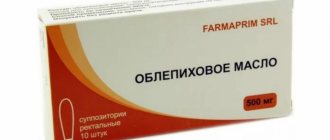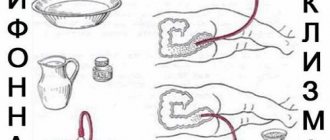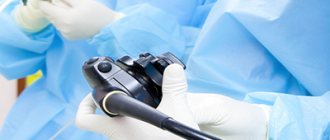Treatment of hemorrhoids in the initial stages begins with drug therapy; if treatment is not successful or the patient seeks help at a late stage of the disease, the doctor decides to perform a surgical operation. Removal of hemorrhoids is carried out under general anesthesia; radical methods are more traumatic than minimally invasive methods and are used at a late stage of the disease, with heavy bleeding, the development of thrombosis, and tissue necrosis. Surgical removal of hemorrhoids is carried out using hemorrhoidectomy, Longo surgery, transanal hemorrhoidal disarterialization. The attending physician decides which surgical method to use after a complete examination of the patient.
The coloproctology department of the Yusupov Hospital is equipped with modern equipment; the hospital is consulted by multidisciplinary doctors of the highest category, candidates for doctors of medical sciences, professors, doctors of sciences. Hospital operating rooms are equipped with innovative facilities for performing surgical interventions. The hospital has diagnostic and rehabilitation centers, a clinical laboratory, and a 24-hour hospital. At the Yusupov Hospital, patients will be able to undergo not only treatment for hemorrhoids, but also concomitant diseases, get advice from an oncologist, undergo diagnostics of diseases using CT, MRI, ultrasound, and undergo blood and urine tests.
Patients are examined for the condition of the rectum using colonoscopy, sigmoidoscopy and other methods. Before an operation to remove hemorrhoids, a proctologist examines the patient on a gynecological chair, and severely ill patients on a couch in a lateral position. During the examination, the shape of the anus, the presence of pathological changes, the degree of prolapse of internal hemorrhoids, the condition of external hemorrhoids are recorded, the anal sphincter reflex is examined, and a digital rectal examination of the rectum is performed.
The essence of the operation
Hemorrhoidectomy is a radical excision of varicose cavities of the rectum outside and inside the anus after artificial cessation of nutrition to each hemorrhoid.
The hemorrhoidectomy operation is used in advanced stages of hemorrhoids, when conservative methods (ointments, suppositories, tablets) do not produce results.
Today, surgery is possible almost bloodlessly, and precisely at the most advanced stages of the disease. These are, first of all, laser, radio wave resection, disarterization - ligation of the arteries feeding hemorrhoids.
Despite this, the most common and accessible method of surgical intervention for the majority of the population of the Russian Federation remains hemorrhoidectomy according to Milligan-Morgan with modifications. These operations for hemorrhoids are carried out in any surgical hospital under the compulsory medical insurance policy, they are highly effective, and are practically uncomplicated, provided that all the prescriptions of the attending physician are followed during the recovery period.
Hemorrhoidectomy according to Milligan-Morgan is:
- open
- removal of hemorrhoids with a wound left unsutured, carried out under anesthesia, requires inpatient recovery for at least 7-10 days; - closed
- performed under local anesthesia, the technique is similar to the operation, but the wound is sutured, this significantly reduces rehabilitation; - submucosal surgery
is the most difficult operation, requiring increased attention to the person being operated on and monitoring his condition. The essence is to open the mucosa above the varicose cavity, remove it, apply sutures to the edges of the mucosa (in essence, this is plastic surgery of the anus, since the submucosa hides the stumps of excised hemorrhoids, recovering on its own).
It is worth mentioning the Longo operation, the essence of which is the intersection of the rectal mucosa with the blood vessels feeding the varicose conglomerate, selecting prolapsed hemorrhoids around the circumference. Therefore, calling the Longo method a hemorrhoidectomy is not entirely correct. The nutrition of the hemorrhoidal node stops, and the varicose vessels become empty. The entire procedure lasts no more than 15 minutes under local anesthesia.
This type of hemorrhoidectomy is practiced in the elderly. The only negative is the inability to immediately remove external hemorrhoids, since the nodes are located subcutaneously (not under the mucosa), and the skin around the anus cannot be excised.
Physical activity
Recovery after hemorrhoid removal is impossible without physical activity. 5–7 days after the intervention, the patient is recommended to sit, stand up, and walk around the hospital ward. This will help restore metabolic processes, which is important for the rapid healing of sutures, preventing the formation of hemorrhoidal fimbria, and general restoration of the body.
Intense physical activity, heavy lifting and strength sports are completely excluded. You cannot engage in cycling or exercise on machines. It is useful for patients to walk and perform breathing exercises on the recommendation of the attending physician. Daily walks in the fresh air will help you recover quickly.
Indications
Radical hemorrhoidectomy is recommended after a thorough analysis of the situation, in the most extreme cases:
- combination of hemorrhoids with other pathologies of the anorectal area (fissures, polyps, perirectal fistulas);
- combination of external and internal hemorrhoids;
- complicated hemorrhoids of different locations, with thrombosis, prolapse - if it is impossible to use minimally invasive techniques;
- recurrence of hemorrhoids after a previously performed procedure for removing nodes using minimally invasive methods;
- repeated bleeding from the rectum;
- the risk of necrosis of the varicose cavity due to strangulation of hemorrhoids;
- recurrent thrombosis of external hemorrhoidal formations;
- large hemorrhoids of stage 1-2, which for one reason or another cannot be removed using minimally invasive techniques.
To make recovery faster
- do not get too cold;
- postpone trips to the pool and sauna;
- do not lie in the bathroom - take a shower;
- follow your diet;
- give up alcohol;
- do not lift or carry heavy objects;
- do not sit for more than half an hour - warm up;
- use wet toilet paper or wash yourself;
- wear comfortable underwear made of breathable material;
- follow your doctor's recommendations;
- If the operation site begins to bleed, see a proctologist.
The Expert Clinic specializes in the treatment of proctological diseases. Experienced coloproctologists will select a safe and effective method for removing nodes. The medical center has a modern laser installation and a Surgitron radio wave apparatus. All operations are performed under anesthesia. Minimally invasive methods allow the patient to go home a few hours after the intervention. You will receive complete recommendations on what to do during recovery. Sign up for a consultation by phone or on the clinic’s website.
Contraindications
The list of contraindications for hemorrhoidectomy looks absolutely logical:
- pregnancy;
- children's age (due to the high probability of relapses after hemorrhoidectomy, it is not customary to operate hemorrhoids before 40 years of age without special indications);
- tumor growth of any location;
- autoimmune processes in the body;
- decreased immunity;
- Crohn's disease;
- disorders in the blood clotting system;
- exacerbation of chronic concomitant diseases;
- infections;
- local inflammation around the anus.
Sometimes, before deciding to undergo hemorrhoid excision, you need to get opinions about the operation from several different specialists.
Permitted and prohibited products
The list of permitted products is quite large. From these you can create a varied, balanced menu:
- Fermented milk products with a low fat content are acceptable. Cheese can be eaten in small quantities, but it should be low-fat hard varieties. If the listed foods cause flatulence or diarrhea, they should be removed from the diet.
- Meat and poultry should be consumed lean. Veal, rabbit, chicken, and turkey are best suited.
- Be sure to eat lean fish, for example, cod, hake, pollock, and navaga.
- Vegetables should be those with fine fiber. These are broccoli and cauliflower. Dishes should be prepared from the following root vegetables: beets, turnips, carrots. In addition, pumpkin, zucchini, and lettuce are good options. Fruits should not cause gas. Kiwi, dogwood, and bananas are recommended. You can add dried fruits in small quantities.
- Herbal teas are allowed as drinks; chamomile, nettle, and yarrow are best. Let's say weakly brewed green tea. Dogwood compote helps a lot. You can take a honey solution. To do this, stir one tablespoon of honey in a glass of warm water.
- Bran bread goes in addition to main dishes.
- Among cereals, preference should be given to oatmeal, millet, buckwheat, and pearl barley. Rice can be used carefully; it has a fixing property.
The diet after hemorrhoidectomy involves limiting a number of foods and drinks that irritate the intestines and cause gas formation.
You will need to give up some foods
Prohibited:
- fatty fish,
- sweets;
- hot peppers;
- vegetables: onions, garlic, radish, white cabbage;
- citrus;
- milk;
- mushrooms;
- carbonated drinks;
- fresh apples in peel, pears;
- black, white bread;
- kvass;
- legumes;
- any canned food;
- strong tea, coffee;
- semolina;
- alcohol;
- pasta.
All of the foods listed should not be eaten for two months.
Knowing the lists of permitted and prohibited foods, you can create a balanced menu, thanks to which the recovery process will be successful, without complications.
Concomitant interventions for radical hemorrhoidectomy
Most often, proctological surgeons prefer closed hemorrhoidectomy - a variant of the Milligan-Morgan operation (much less often - the Longo operation). This is because the first modification allows for several additional interventions:
- relieve hypertonicity of the anus, which prevents normal bowel movements. To do this, it is possible to perform a fragmented sphincterectomy during a classic hemorrhoidectomy, cutting along the fibers of the internal rectal sphincter, which contributes not only to the relief of spastic tone, but also to complete wound healing. The operation is rare due to the risk of postoperative encopresis (fecal incontinence), so performing such a manipulation is the responsibility of the surgeon;
- the perianal fissure is corrected by similar balancing of the blood supply to the rectal area or by excision of the pathological area;
- rectal fistulas dictate the restoration of the integrity of their walls during hemorrhoidectomy (the danger is the addition of a secondary infection not only in the area of the openings of the fistula, but also at the site of removal of the hemorrhoid).
The operation is usually performed by coloproctologists or proctologists, but in small regional hospitals this may be the functional responsibility of a general surgeon who has completed the necessary specialization.
Hygiene rules
After removal of hemorrhoids, hygienic care of the anus is of great importance. The patient needs to wash twice a day with warm water and baby soap. Linen should be soft, rough seams and synthetic materials are not allowed. After bowel movements, doctors recommend rinsing the anus with cool water. This will help increase vascular tone and stimulate blood flow from the tissues of the rectum.
By observing hygiene measures, many undesirable consequences can be prevented.
In order to not only remove dirt during the washing process, but also get maximum benefits, you can use herbal decoctions. Plants such as chamomile, string, nettle, yarrow, and St. John's wort are suitable for this. With their help, you can relieve pain, inflammation, and disinfect the treated area. Decoctions can be used for washing or added to local baths.
Important! It is recommended to use herbs and other folk recipes exclusively as prescribed by a proctologist.
Preparing for surgery
Hemorrhoidectomy can be performed for health reasons (bleeding with large blood loss, for example) or as planned. Urgency dictates rapid diagnostics in minimal quantities. Clinical and laboratory examination is scheduled, including:
- UAC, OAM, biochemistry;
- PTI - prothrombin index, PTT - prothrombin time, INR - international normalized ratio in the blood coagulation system, coagulogram;
- ECG (when using general anesthesia);
- fluorography or x-ray of the lungs;
- determination of blood group and Rh factor;
- examination for dangerous sexually transmitted infections, immunodeficiency;
- a certificate from a therapist about the possibility of carrying out the procedure in accordance with the general state of health.
In addition, before hemorrhoidectomy you need:
- anoscopy – examination of the lower rectum and anus;
- sigmoidoscopy (excluding pain and inflammation) - visual examination of the mucous membrane of the rectum, in some cases - the distal parts of the sigmoid colon;
- Patients who have crossed the fifty-year mark are required to have a colonoscopy (video colonoscopy) - an endoscopic examination of the colon with a fiberscope to exclude a tumor.
About a week before hemorrhoidectomy, fiber is excluded from the daily menu. On the eve of the operation, only easily digestible breakfast and lunch are allowed, then food intake is excluded. You are allowed to drink plain water until 12 am (this is done so that there are no troubles when choosing the type of anesthesia).
A day before the operation, the intestines are cleaned with a course of Enema wedge enemas: the first is given before bedtime, the second - an hour or two before surgery. Patients with severe somatic pathologies or those over 60 years old are additionally given about three liters of laxatives to drink from four o’clock in the afternoon until seven in the evening: Lavacol, Fortrans, Endofalk.
The intake of all previously prescribed medications must be agreed with the doctor. Anticoagulants/disaggregants are contraindicated: Aspirin, Thrombo-ACC, Cardiomagnyl. The dose of lifelong tablets is determined by the doctor.
Technique for performing hemorrhoidectomy
Since the Milligan-Morgan operation is not a cavity intervention, the technique of the selected modification of hemorrhoidectomy should guarantee the patient comfort, effectiveness and safety. The operation algorithm involves the following steps:
- Anesthesia. Anesthesia for hemorrhoidectomy is selected individually. Most often, general or epidural anesthesia is used, sometimes local and general anesthesia are combined, which allows the manipulation to be performed in a hospital for one day. The following are taken into account: the patient’s age (elderly – general anesthesia is assumed), injuries to the pelvis and spine (epidural anesthesia is not possible).
- Premedication. A catheter is inserted into a vein to supply low-toxic painkillers to the patient, and sensors are connected to measure blood pressure, heart rate, respiratory rate, and oxygenation. Then, the trachea is intubated and the depth of breathing is monitored.
- Choosing a pose. Domestic surgeons prefer to perform a hemorrhoidectomy on a patient when he lies on his back with bent, fixed legs (as on a gynecological chair) - the Trendelenburg position, which complicates blood circulation, but is convenient for the doctor and the patient (in the West they operate on the patient when he lies on his stomach so that By the blood flow to the nodes, you can accurately see their location).
- The next step is to examine the rectum sphincter with a special medical mirror to determine the exact location of the hemorrhoids.
Progress of hemorrhoidectomy according to Milligan-Morgan
They sequentially remove hair from the surgical field, inject the anus with an anesthetic, dilate it, disinfect the mucous membrane, and dry it with tampons.
Internal hemorrhoids are grasped and removed clockwise at the 3,7, 11 o'clock position. First, the stem of each node is sutured, then the lump is cut off using a cauterizing, ultrasonic or laser knife. The wound is treated in accordance with the modification. A turunda soaked in a special ointment is left in the anal canal for 6 hours. Rarely (due to pain and urinary retention) rectum tamponade is performed. Usually, to prevent narrowing of the anus, special dermal bridges are left in the wound.
Since the Milligan-Morgan operation is traumatic, a fairly long recovery is required. This is a minus. And a plus is the possibility of simultaneous (or alternate) removal of both internal and external hemorrhoids.
Hemorrhoidectomy according to Fergusson
differs in that at the final stage of the operation, catgut is used in a radial direction from the edges of the rectal passage. This ensures rapid wound healing and minimizes complications;
Operation Parkes
– the mucous membrane remains intact, only the area above the node is dissected, which is removed, and the mucous membrane is fixed.
Whether or not complications develop after surgery largely depends on the rehabilitation period.
Postoperative period
According to patient reviews and the firm belief of doctors, the rehabilitation period after hemorrhoidectomy is more important than the operation itself.
The first day is bed rest, lying on your stomach for normal blood flow and outflow of blood from the pelvis and rectum (prevention of suture dehiscence or perineal injury).
Three days - fasting to avoid defecation (risk of secondary infection). On the fourth day - pureed or semi-liquid food: slimy porridges, jelly, puree soups, steamed cutlets with minced meat processed twice.
The operated patient has been experiencing pain for several days. If it is unbearable, relief medications are needed: Pentalgin, Sedalgin, Nurofen, Ketorol, Mig. The first three days - round-the-clock observation, dressings with antiseptics: Levomekol, Methyluracil, to avoid wound infection.
Healing after uncomplicated hemorrhoidectomy occurs on average within a week, depending on the individual characteristics of the patient (from 5 to 10 days). The recovery time depends on the chosen method. Open technology – a month and a half, closed – 30 days. Longo's method reduces rehabilitation to 14 days.
Innovations require short recovery:
- laser hemorrhoidectomy and radio waves - no more than 24 hours in the hospital, a week - outpatient;
- ligation of blood vessels – up to 7 days of outpatient supervision.
Almost all innovations make it possible to avoid the postoperative period.
Main stages of rehabilitation
Rehabilitation is a series of activities aimed at maximizing the restoration of body functions that were impaired as a result of injuries, serious illnesses or surgery. The postoperative period after hemorrhoid removal includes several stages. These include:
- taking medications prescribed by a doctor;
- diet;
- proper physical activity;
- maintaining personal hygiene.
Important! Each of the points is of irreplaceable importance. Only an integrated approach helps to achieve the desired result and prevent relapse of the pathology.
Complications of hemorrhoidectomy
Side effects after surgery to remove hemorrhoids are rare. The main ones:
- bleeding is controlled with adrenaline, hemostatic agents (Tranexam, aminocaproic acid, Dicynone);
- constipation after surgery – psychosomatics (fear of sutures coming apart, suppuration);
- urinary retention is a male pathology, corrected by catheterization;
- anal fissures - the result of dense stools, can be treated with liniment with nitroglycerin or excision of the defect;
- fistulas - appear after a few months, the essence is excision of “extra muscles”;
- narrowing of the anus - the result of fistulas, corrected by sphincterotomy or dilators;
- submucosal hematomas resolve on their own;
- injury to muscles, ligaments - a surgeon’s mistake leading to urinary or fecal incontinence;
- violation of asepsis and antisepsis is the cause of secondary infection; treatment is carried out taking into account the pathogen and its sensitivity to antibiotics.
Complications are one of the reasons for recurrence of hemorrhoids.
Does hemorrhoidectomy affect the patient's daily life?
Radical excision of hemorrhoids removes the symptoms of the disease that bother the patient, but requires serious changes in the patient’s usual lifestyle to prevent hemorrhoids, relapse or prevent the progression of varicose veins:
- drinking large amounts of water (at least 2 liters);
- daily diet with a predominance of fiber;
- dosed physical activity;
- weight control;
- bowel movements with every urge to defecate (do not restrain yourself);
- if necessary (constipation) - take laxatives: Regulax, Fitolax, Fitomucil.
The doctor develops a program of such rehabilitation individually for each patient.
Treatment of hemorrhoids
In order to prevent hemorrhoids, it is necessary to eat right, improve bowel function and increase physical activity. However, these measures are not enough to treat an already manifested disease. Treatment of hemorrhoids may include conservative methods of treating hemorrhoids (treatment of hemorrhoids without surgery) and surgical methods.
Treatment of hemorrhoids without surgery
It is important to know that it is impossible to completely get rid of the “royal disease” through only conservative treatment of hemorrhoids. Hemorrhoids are a chronic disease, progressive and dangerous with complications. Ointments or suppositories for hemorrhoids can reduce pain and temporarily “relieve” symptoms, but do not cure the disease. In any case, we recommend that you abandon self-medication and consult a proctologist who will offer you the most modern methods of treating hemorrhoids and select the most effective drugs for the treatment of hemorrhoids.
Conservative treatment of hemorrhoids is used:
- to relieve pain during exacerbation of the disease;
- to prevent complications and bleeding;
- for the prevention of exacerbations in chronic hemorrhoids;
- for preparation before surgery;
- for the rehabilitation of the patient in the postoperative period.
Therapeutic treatment for hemorrhoids can be used in the early stages of the disease. Non-surgical treatment of hemorrhoids includes the use of painkillers, anti-inflammatory, wound healing, venotonic, hemostatic drugs for the treatment of hemorrhoids. In addition, local remedies are used - suppositories for hemorrhoids, microenemas, baths and ointments for hemorrhoids.
Drug therapy includes drugs for the treatment of hemorrhoids, aimed at eliminating the inflammatory process and pain, increasing the tone of the veins and improving blood circulation.
To relieve pain, you can take some analgesics in injections and tablets.
The use of phlebotonic drugs (escusan, detrolex, etc.) helps strengthen the tone of the venous wall of hemorrhoids. These same drugs are used not only in the treatment of hemorrhoids, but also in the treatment of varicose veins in the legs.
When treating complicated hemorrhoids, for example, bleeding, homeostatic or hemostatic drugs may be prescribed. In this case, you cannot take some non-steroidal anti-inflammatory drugs, because they themselves reduce blood clotting.
If there is an anal fissure along with hemorrhoids, then it is also possible to use ointments that relieve spasm of the anal sphincter.
Heparin ointment reduces blood clotting and the risk of blood clot formation. This ointment can be used if there is a risk of hemorrhoidal thrombosis.









